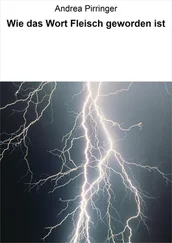This book fulfills this gap. All the aspects of arc flash hazard calculations, which include short circuits, protective relaying, differential relays, arc flash detection relays, relay coordination, grounding systems, arc resistant equipment, current transformer performance, and the like, are included in easy-to-understand language with a number of case studies, practical applications, and references. Current technologies and arc flash mitigation strategies, such as coordination on instantaneous basis, current limiting devices, zone interlocking, and equipment innovations, are covered. Appendix Bprovides tabulated statements for quick look up of arc flash hazards in electrical power systems. Chapter 13is devoted to secondary protection of substation transformers because of its importance in arc flash hazard reduction. The critique of IEEE 1584 Guide methodology by various authors and improvements in safety culture and work ethics are discussed. A new algorithm for the calculation of arc flash hazard accounting for the decaying nature of the short-circuit currents, first presented in IEEE Industry Application Transaction papers by the author, is included.
The IEEE 1584 Guide does not cover arc flash hazard calculations in DC systems. Chapter 15provides detailed short-circuit calculations in DC systems and then their applications to arc flash hazard calculations in DC systems. Chapter 16discusses application of Ethernet and IEC 61850 communication protocols in a large industrial system for control, diagnostics, and data accessibility.
The book is written for practicing engineers, consultants, electrical power systems managers, and operating personnel. Some sections require undergraduate-level or higher knowledge of electrical power systems. The book should attract a wide readership due to the ever-increasing importance of this subject in recent times.
J.C. Das
Special thanks go to the IEEE Standards Association for providing permission to use their content.
J.C. Das is currently President of Power System Studies, Inc. Earlier, he headed the Power System Analysis Department at Amec Foster Wheller, Inc., Tucker, GA, for 30 years. He is specialist in conducting power system studies, including short-circuit, load flow, harmonics, stability, arc flash hazard, grounding, switching transients, and protective relaying. His interests include power system transients, EMTP simulations, harmonics, power quality, protection, and relaying.
He has authored or coauthored about 70 technical publications, nationally and internationally and has published 200 study reports for real-world power systems for his clients. He is author of the books:
Power System Analysis , Second Edition, CRC Press, 2011; Transients in Electrical Systems, McGraw-Hill, 2010; Arc Flash Hazard Analysis and Mitigation (second edition under publication), IEEE Press, Hoboken, NJ, 2012. Power System Harmonics and Passive Filter Designs , IEEE Press, Hoboken, NJ, 2015; Understanding Symmetrical Components for Power System Modeling , IEEE Press, Hoboken, NJ, 2017; Power System Handbook in Four Volumes; Short-Circuit in AC and DC Systems , ANSI/IEEE and IEC Standards; Load Flow Optimization and Optimal Power Flow; Harmonic Generation Propagation and Control, Power System Protective Relaying , CRC Press, Boca Raton, FL, 2018.
Mr. Das is a member of the IEEE Industry Applications and IEEE Power Engineering Societies. He is a member of TAPPI and CIGRE, a Fellow of Institution of Engineering Technology (UK), a Life Fellow of the Institution of Engineers (India), and a Member of the Federation of European Engineers (France). He is registered Professional Engineer in the States of Georgia and Oklahoma, a Chartered Engineer (C. Eng.) in the UK, and a European Engineer (Eur. Ing.) in the Europe. Mr. Das received IEEE, Pulp and Paper Industry Committee meritorious award in Engineering in 2005.
His highest education qualification is a PhD in Electrical Engineering.
1 ARC FLASH HAZARDS AND THEIR ANALYSES
In the past, industrial electrical systems in the United States have been designed considering prevalent standards, that is, ANSI/IEEE, NEC, OSHA, UL, NESC, and the like, and arc flash hazard was not a direct consideration for the electrical system designs. This environment is changing fast, and the industry is heading toward innovations in the electrical systems designs, equipment, and protection to limit the arc flash hazard, as it is detrimental to the worker safety. This opens another chapter of the power system design, analysis, and calculations hitherto not required. There is a spate of technical literature and papers on arc flash hazard, its calculation and mitigation. References [1–8] describe arcing phenomena and arc flash calculations, sometimes commenting on the methodology of arc flash hazard calculations in IEEE Guide 1584 [9] (see Chapter 3).
These issues have become of great importance in the power system planning, designs and protective relay applications. “Safety by Design” is the new frontier (see Chapter 2).
Awareness of the various hazards caused by arc flash has increased significantly over the past decade. Arc flash is a dangerous condition associated with the unexpected release of tremendous amount of energy caused by an electric arc within electrical equipment [10]. This release is in the form of intense light, heat, sound, and blast of arc products that may consist of vaporized components of enclosure material—copper, steel, or aluminum. Intense sound and pressure waves also emanate from the arc flash, which resembles a confined explosion. Arcing occurs when the insulation between the live conductors breaks down, due to aging, surface tracking, treeing phenomena, and due to human error when maintaining electrical equipment in the energized state. The insulation systems are not perfectly homogeneous and voids form due to thermal cycling. In nonself restoring insulations, treeing phenomena starts with a discharge in a cavity, which enlarges over a period of time, and the discharge patterns resemble tree branches, hence the name “treeing” ( Figure 1.1). As the treeing progresses, discharge activity increases, and, ultimately the insulation resistance may be sufficiently weakened and breakdown occurs under electrical stress. Treeing phenomena is of particular importance in XLPE (cross-linked polyethylene) and nonself restoring insulations. Surface tracking occurs due to abrasion, irregularities, contamination, and moisture, which may lead to an arc formation between the line and ground. An example will be a contaminated insulator under humid conditions. Though online monitoring and partial discharge measurements are being applied as diagnostic tools, the randomness associated with a fault and insulation breakdown are well recognized, and a breakdown can occur at any time, jeopardizing the safety of a worker, who may be in close proximity of the energized equipment. Arc temperatures are of the order of 35,000°F, about four times the temperature on the surface of the sun. An arc flash can therefore cause serious fatal burns.

Figure 1.1. Treeing phenomena in nonself-restoring insulation, leading to ultimate breakdown of insulation.
Electrical arcing signifies the passage of current through what has previously been air. It is initiated by flashover or introduction of some conductive material. The current passage is through ionized air and the vapor of the arc terminal material, which has substantially higher resistance than the solid material. This creates a voltage drop in the arc depending upon the arc length and system voltage. The current path is resistive in nature, yielding unity power factor. Voltage drop in a large solid or stranded conductor is of the order of 0.016–0.033 V/cm, very much lower than the voltage drop in an arc, which can be of the order of the order of 5–10 V/cm of arc length for virtually all arcs in open air ( Chapter 3). For low voltage circuits, the arc length consumes a substantial portion of the available voltage. For high voltages, the arc lengths can be considerably greater, before the system impedance tries to regulate or limit the fault current. The arc voltage drop and the source voltage drop are in quadrature. The length of arc in high voltage systems can be greater and readily bridge the gap from energized parts to ground.
Читать дальше













